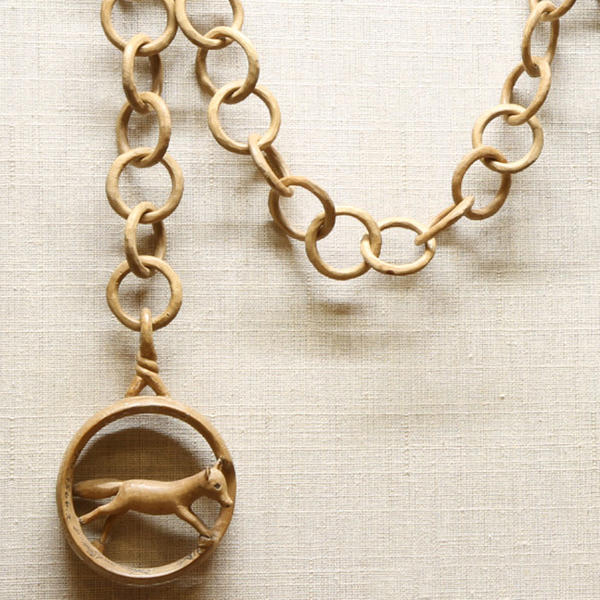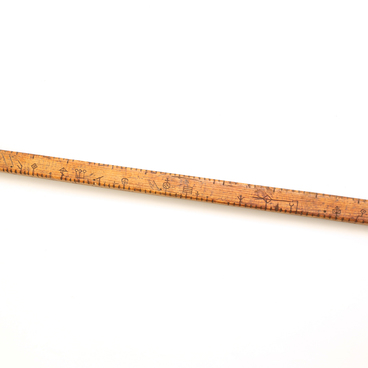A 19th century master carved this chain manually from a solid wooden bar. It consists of seventy-three round links connected to each other. At the end of the chain, there is a ring decorated with a figure of a fox, a dog or a wolf. Historians designate such figures as Bashkir generic symbols called tamgas.
Bashkir chain with a clan symbol (tamga)
Creation period
19th century
Technique
woodcarving
Exhibition
2
Open in app#4
Unknown Author
Bashkir chain with a clan symbol (tamga)
#5
#3
Tamga
#6
The Bashkirs have an ancient legend, according to which a caravan of nomads was met by a wolf, who led their tribe on. The wolf brought the travelers to a fertile land with pastures and forests. The elders decided to stay on this land. Since then, the people were called ‘Bashkorttar, ” people who came following the leading wolf (bashkort), and the wolf became a popular clan symbol.
Tamgas became an analogue of totem animals, guardians of the tribe. Eagle, wolf and fox were among the most common totems, but symbols on tamgas did not only feature animals and birds. There were also geometric shapes and lines. Tamgas symbolized the unity of the clan and the tribe, and their independence. There were many clan signs, and they were passed on in their original form from generation to generation.
#2
#7
According to legends, it was Genghis Khan who gave tamgas to Bashkir clans and tribes in the 12th century. The first written mention of these clan symbols dates back to the 13th century. The Persian scientist Rashid-ad-Din wrote in his epos Oguzname:
“To each of Oguz”s 24 grandchildren, Irkil Khodja assigned a rank, and occupation, and a name, in order to avoid disputes and disagreements. To each of them, he gave an individual tamga for marking livestock so that everybody could tell to which of them animals belonged”.
#8
In the 19th century, the tamga became a social status symbol for the Bashkirs, and was passed on from father to son as a sign of belonging to a certain clan. Depending on the owner’s taste and wallet, a variety of materials were used to make the clan mark. Tamgas were mostly carved from wood, as Bashkortostan was rich in vast birch and linden forests.
#9
Woodcarving
#10
The Bashkir woodcarving craft has deep roots. Over time, it transformed into a handicraft industry and reached the level of a decorative art. In addition to sculptural and relief carving, artisans were skilled in making utensils and sculptures from burled birch wood, also called burls. The artisans developed certain patterns for woodwork decorations. Ornamental and relief carvings were mostly used to decorate saddles, stirrups and sets of utensils for serving the traditional drink kumis to guests. The utensils included carved ladles (izhau), kegs (tepeny) and thin-walled bowls (ayak, aldyr).
#11
O.E. Kler Sverdlovsk Regional Ethnography Museum
read morehide
00:00
00:00
1x
Bashkir chain with a clan symbol (tamga)
Creation period
19th century
Technique
woodcarving
Exhibition
2
Open in app
Share



